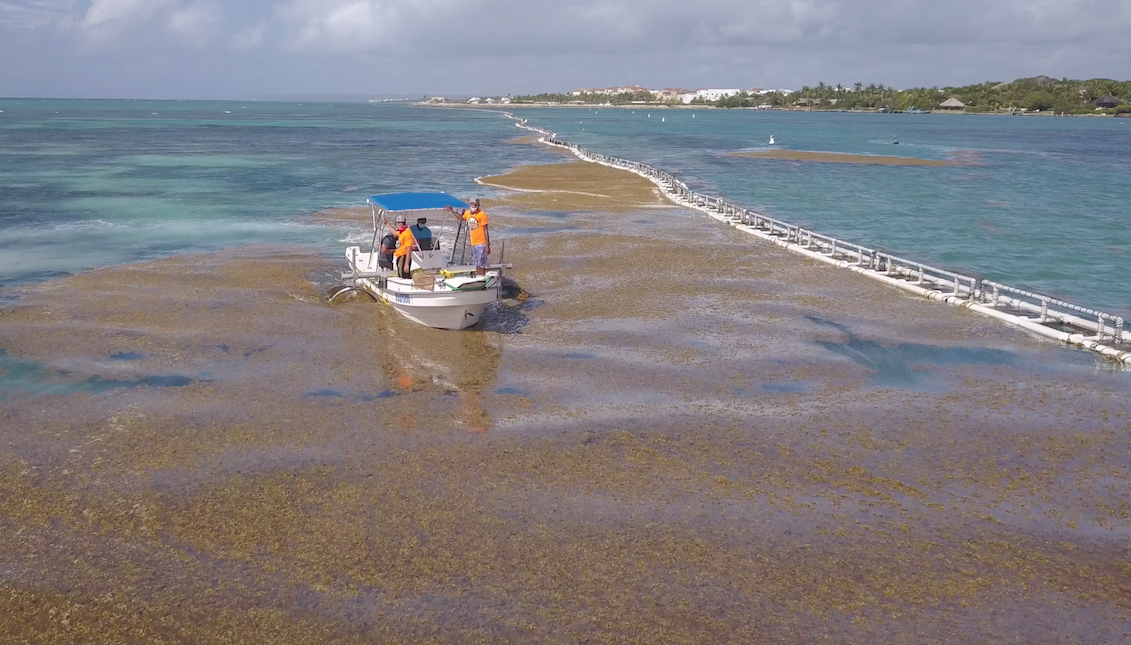
From Puerto Rico, A New Idea For An Industry That Needs One
SAN JUAN, Puerto Rico – Newspaper editor Rafael Matos interrupted an interview recently to take a call on a story about a possible small plane crash in a remote part of the island. After dispatching a photographer, he switched the conversation to the business of his nonprofit newspaper venture.
Working both ends of a newspaper operation these days is routine for Matos, editor of the island’s English-language Puerto Rico Daily Sun. It is an experiment in alternative newspaper ownership that many in the industry are watching.
He is one of the 85 member-owners of the nonprofit Cooperativa Prensa Unida, organized by former employees of the defunct Pulitzer Prize-winning San Juan Star, which closed last August after 49 years. Two months later, the cooperative launched the Puerto Rico Daily Sun to keep an English daily newspaper alive.
“It’s not glamorous. It’s like an old diesel engine that works,” Matos says of the cooperative. “We’re not going to be millionaires, but it’s a dependable means of getting the job done.”
If the cooperative can break even while serving a niche market for English-language readers, the paper would be a success, editors say. So far, newsstand sales and a brisk classified and legal notice business, along with some ad revenue, help the 30,000-circulation paper meet its payroll. A low-interest loan supports equipment and supplies.
The cooperative is backed by an $800 investment by each member and financial support and guidance from the island’s long-established cooperatives. Fomento Cooperativo, a government agency which supervises all the cooperatives in Puerto Rico, conducts audits every few months.
English-language newspapers have circulated in Puerto Rico dating as far back as 1898. Currently, the island has an English business weekly and a few magazines. Cooperatives have long provided an economic model for financing entrepreneurial ventures, including projects in agriculture, education, tourism and construction.
As the Puerto Rico Daily Sun approaches its first anniversary, editors say it still needs to grow subscriptions and attract more advertisers once claimed by the Star. An interactive Web site is in the works, but Matos says they are holding off the launch until they can build a solid subscription base.
Studies have identified a potential 400,000 English-language readers on the island, in addition to second and third generations of Puerto Rican descent residing elsewhere. About 4 million live on the island and an equal number on the U.S. mainland. These are persons who have lived or studied in Puerto Rico, tourists who travel to the island, as well as professionals such as teachers, military and business people.
Increasingly, newspapers and Web sites are exploring new business models amid a wave of layoffs that is rocking the U.S. newspaper industry. U.S. dailies lost 5,900 newsroom jobs in 2008 following a drop of 2,400 the year before, reducing employment of journalists to levels of the 1980s, according to the American Society of News Editors.
“We are at a time when breaking even may be a pretty reasonable goal for a newspaper,” says Rick Edmonds, media business analyst at the Poynter Institute in Florida. “For a variety of newspapers, the nonprofit structures are getting a second look.”
Nonprofit structures in general could bring other players to the table. In the case of The Daily Sun, it does sound generally that the model, culturally specific to Puerto Rico, fits the times, Edmonds says.
While the no-frills infrastructure allows journalists to pursue stories free of corporate pressures, owners must balance the routines of daily journalism with managing a business.
“Since we are owners, there are multiple responsibilities, including making a multitude of decisions,” says Matos.
The newsroom is housed in a cramped space in Rio Piedras. A skeletal staff produces six pages of local news in addition to sports, features and business sections that often rely on wire copy. They’ve learned to pool their skills to include administering a payroll, monitoring expenses and maintaining equipment.
Matos wants to evolve the print product into a publication with more local and in-depth pieces, while reserving the Web for breaking news, features and general information to lure a wider audience.
“It’s a promise of better journalism because you can tell the story the way it is and not worry about a corporate board of directors, politics or agendas,” he says of the cooperative as a model for an industry searching for new paths.
(Edna Negrón is a veteran journalist. She teaches journalism at Ramapo College of New Jersey. Email her at [email protected].)
©2009









DEJE UN COMENTARIO:
¡Únete a la discusión! Deja un comentario.